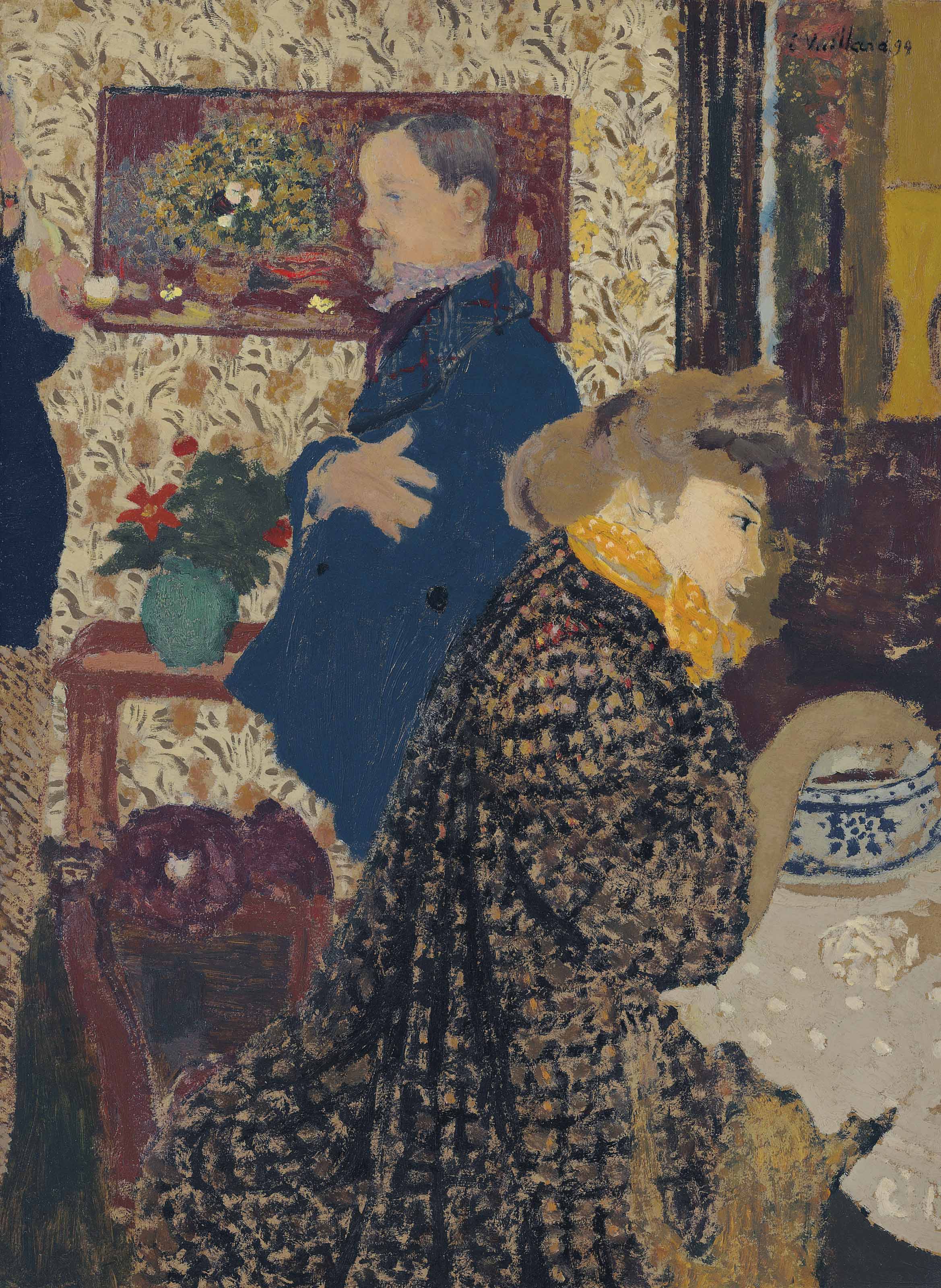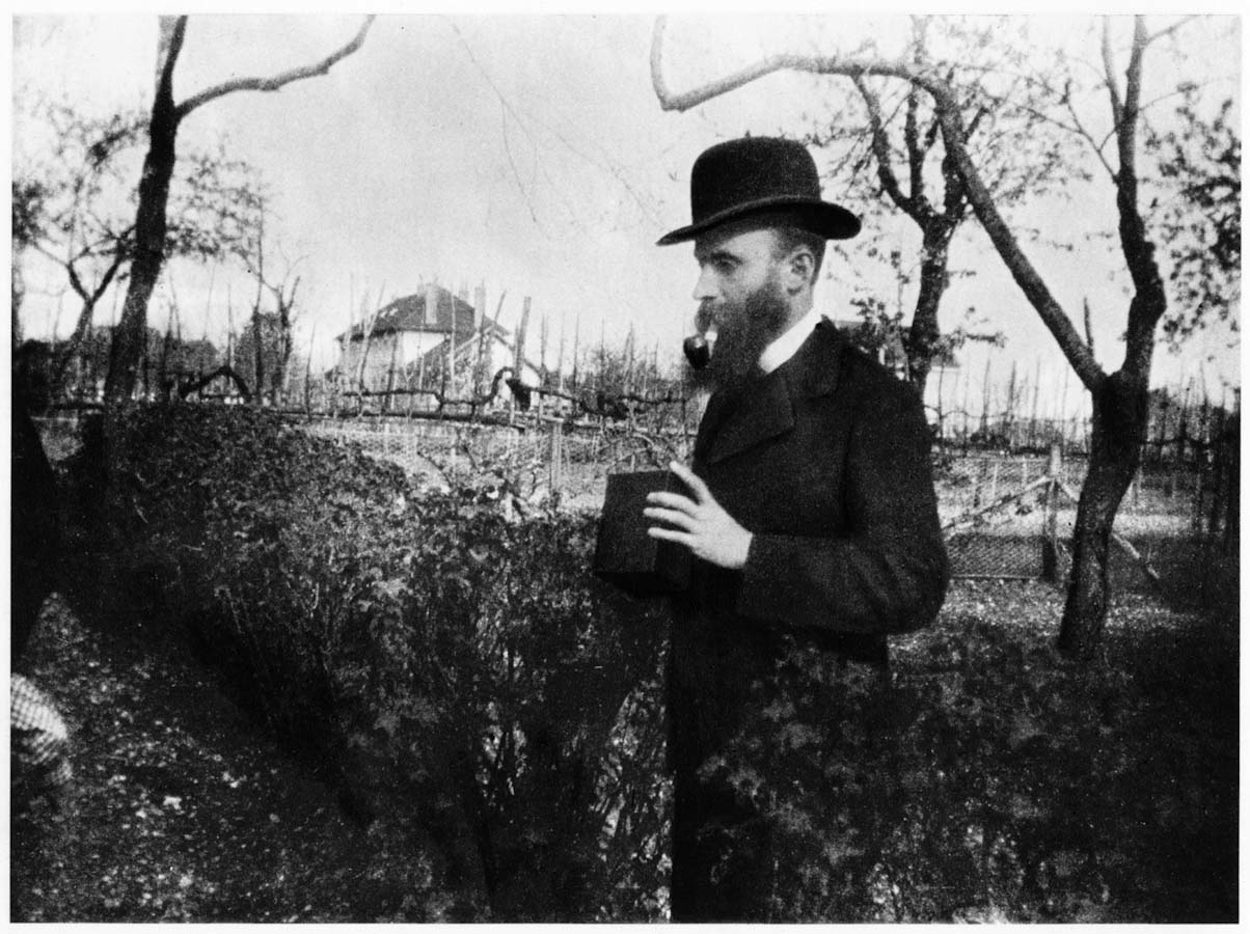In this painting, we see a group of famous friends. The woman in the foreground is Misia Natanson, the perennial muse of the Nabis and the object of Vuillard's unrequited infatuation during the last years of the 19th century. The man in the back is the artist, Félix Vallotton (I love his works!), who also had a charged and flirtatious relationship with Misia. Perhaps Vallotton appears here as a proxy for Vuillard himself, or as a friendly rival for Misia’s divided affections; in either case, the simultaneous nearness and disengagement of the two protagonists suggests a certain ambiguity in their relationship.
The third man, or rather I should say, pieces of the third man, are Misia's husband, Thadée (well, when you know now that Vuillard loved Misia, there is no surprise he cut her husband out of the painting), who co-founded the influential literary journal La Revue Blanche. Vuillard’s enchantment with Misia, who constituted the very epicenter of Paris’s most advanced artistic and literary circle at this time, finds its most poignant and intimate expression in the present interior, a polyphony of color and texture that represents both a lyric sublimation of the artist’s intense emotions and a fantasy of his desires fulfilled.
In 1893, Thadée married Misia, a gifted pianist and born iconoclast, who quickly became the muse and darling of the worldly, intellectual society that revolved around La Revue Blanche. Misia, a gifted pianist, was a star. Her position, combined with her unique personal style, her seductive charm, and her almost physical need to be constantly surrounded by people, made her irresistibly magnetic.
For Vuillard, his deepening relationship with the Natansons was like a religious conversion, life-changing and all-consuming. By the middle of the decade, he saw them almost daily. They purchased his work in quantity and recommended him unreservedly to friends; they afforded him inside access to the very latest in arts and ideas, and they demonstrated a way of life—a taste and a culture—that fascinated the young artist.
Les Nabis were the artists now assigned to the very wide group of Post-Impressionists. If you would like to learn more about them, please check our Basic Course on Post-Impressionist. : )
P.S. Vuillard had a special talent for depicting women; here you can see some of the female personalities from the epoch portrayed by this exquisite painter.


 Édouard Vuillard
Édouard Vuillard